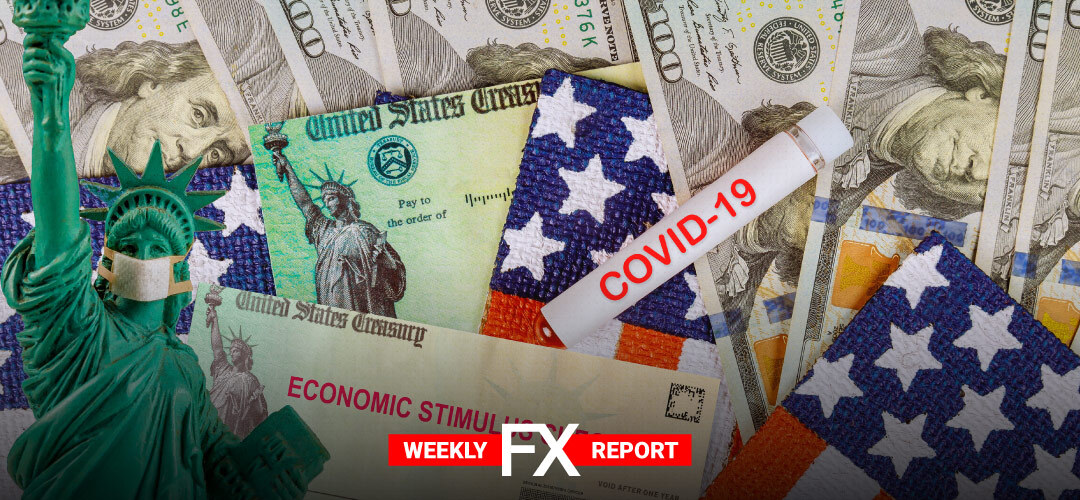Surging coronavirus cases and US stimulus doubts made traders cautious and overcast the economic outlook eight days before the US presidential election.
The dollar strengthened, equities fell, and markets were broadly risk-off. Analysts cited new lockdowns in Europe and record-high daily virus cases in the United States.
Investors closely monitored talks over the next round of fiscal package, while economic data pointed to a stalling recovery.
U.S. House Speaker Pelosi said that she expected a Trump administration response on Monday to the US latest stimulus plan. But there is little evidence a deal is close.
The United States has recorded its highest number of new infections for two consecutive days. EU countries announced new restrictions.
Meanwhile, more than 59.1 million Americans have already voted already more than did during all pre-election voting in 2016. President Trump and Democratic challenger Joe enter their final full week of campaigning. Markets increasingly price in the likelihood of a Democratic president and Congress and the resulting rise in government spending and borrowing
News that a vaccine being developed produced an immune response in elderly and young people failed to bolster market sentiment.
Business surveys in France and Germany showed the impact of the COVID-19 second wave in the euro zone’s two biggest economies.
On the Brexit front, the current phase of negotiations was extended until Wednesday. The EU’s chief negotiator, Michel Barnier, will be in London to try and clinch a deal. After Wednesday negotiations will switch to Brussels.
Britain and the EU have just over two months left to agree on their future trading relationship. There are some hopes that a Brexit deal can be reached before the Dec. 31 deadline.
START TRADINGMonetary Policy decisions in Japan and the Eurozone in focus
The week ahead holds three major central bank meetings and the final sprint to the polls in the United States. In a packed week for monetary policy decisions, Canada’s and Japan’s central banks will probably hold fire for now. The market assumes the ECB will sound cautious on inflation and growth even if it skips further easing. We’ll also get a look at a range of GDP reports.
- Traders will be watching for the German Ifo business survey at 0800 GMT on Monday (26.10). Experts expect current conditions to have improved.
- Traders will be looking for the BoC Rate Decision on Wednesday (28.10). UK Core CPI may probably rise to 1.3%, up from 0.9% in August.
- In the week ahead, U.S. third-quarter gross domestic product data is due on Thursday (29.10) Data is forecast to show a consumer-led 31.9% rebound in U.S. economic output after the second’s quarter’s historic collapse. Further, the ECB will release its Rate Decision. The ECB is likely to maintain rates at 0.00%, so the focus will be on the rate statement and press conference with ECB President Christine Lagarde. Finally, traders expect no change in policy at the Bank of Japan Rate Decision.
- On Friday (30.10), investors’ eyes are on the German GDP, the Canada GDP and the Eurozone Inflation Report, expecting a strong rebound.
Follow this week’s economic calendar.
LQDFXperts – Stimulus doubts, record-high COVID-19 cases prevail markets
EUR/USD jumped 1.2% last week, marking its best week since July. Surging coronavirus cases sent investors to the safety of the dollar after it fell broadly last week. The greenback recorded a weekly decline of around 1%. The euro continues to show volatility. The ECB rate announcement could have a significant impact on the fortunes of the common currency this week.
GBP/USD continues to show volatility. The pair gained one percent last week, erasing the losses from a week earlier.The pound was up 0.9% on a weekly basis. Analysts say trade talks between Britain and the European Union are the primary driver of the pound.
USD/JPY declined for a second straight week, as the pair fell below the 105 level. In the upcoming week, the Bank of Japan releases its rate decision. The US dollar continues to struggle, and the pair is close to its lowest level since March.
AUD/USD reversed directions last week and recorded gains of 0.8%. The RBA continues to signal that it will trim interest rates at the November meeting, which could weigh on the Australian dollar. Investors will look at other assets which offer a better rate of return.
USD/CAD reversed directions last week and rose 0.5%. With the Bank of Canada announcement and the GDP release, traders should be prepared for some volatility from the pair this week.
PLEASE NOTE The information above is not investment advice.
Sources: Reuters, CNBC, BBC, The Guardian
